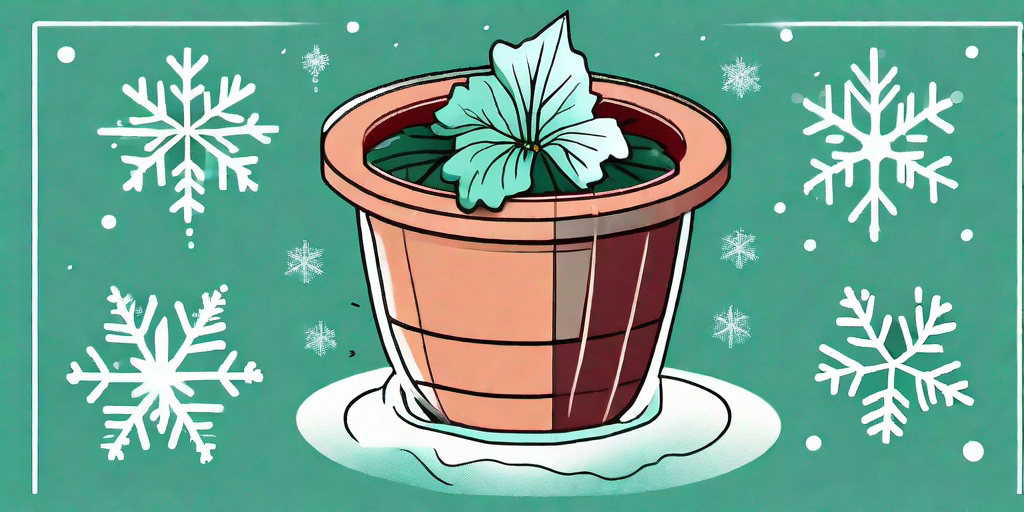
The hibiscus, a tropical beauty that graces many gardens with its vibrant blooms, is a bit of a diva when it comes to winter. But don't worry, with a little TLC and some handy tips, you can keep your hibiscus happy and healthy throughout the colder months. So, grab a cup of hot cocoa, put on your favorite woolly socks, and let's dive into the world of winter-proofing your hibiscus.
Understanding Your Hibiscus
The Tropical Nature of Hibiscus
First things first, it's important to understand that hibiscus plants are tropical creatures. They love the sun, the warmth, and the humidity. They're the plant equivalent of that friend who's always posting beach selfies on Instagram. Winter, with its cold temperatures and dry air, is not their cup of tea. But that doesn't mean they can't survive it. It just means they need a little extra care.
There are many different types of hibiscus plants, but the ones most commonly grown in gardens are the tropical hibiscus (Hibiscus rosa-sinensis) and the hardy hibiscus (Hibiscus moscheutos). The tropical hibiscus is more sensitive to cold temperatures, while the hardy hibiscus can tolerate some frost. However, both types will benefit from winter-proofing.
Signs Your Hibiscus is Unhappy
Like a petulant diva, a hibiscus will let you know when it's not happy. The leaves may turn yellow or drop off, the plant may stop blooming, or it may just look a bit sad and droopy. These are all signs that your hibiscus is feeling the winter blues and needs some extra attention.
Don't panic if your hibiscus drops a few leaves or stops blooming in winter. This is a normal response to the change in seasons. However, if the plant looks unhealthy or is losing a lot of leaves, it's time to take action.
Winter-Proofing Your Hibiscus
Bringing Your Hibiscus Indoors
If you live in a region where winter temperatures regularly drop below freezing, the best thing you can do for your tropical hibiscus is to bring it indoors. Choose a bright, sunny spot, preferably with a south-facing window. Remember, your hibiscus loves the sun!
Before you bring your hibiscus indoors, give it a good check for pests. The last thing you want is to bring a bunch of aphids or spider mites into your home. If you do find any pests, treat the plant with an insecticidal soap or neem oil before bringing it inside.
Providing the Right Care Indoors
Once your hibiscus is safely indoors, it's important to provide the right care to keep it happy. This includes watering, humidity, temperature, and light.
- Watering: Hibiscus plants like to be kept evenly moist, but not waterlogged. In winter, they need less water than in summer. A good rule of thumb is to water when the top inch of soil feels dry to the touch.
- Humidity: Hibiscus plants love humidity. In the dry winter months, you can increase humidity by placing the plant on a tray of pebbles filled with water, or by using a humidifier.
- Temperature: Hibiscus plants prefer temperatures between 60 and 75 degrees Fahrenheit. Avoid placing the plant near drafts or heating vents, as these can cause temperature fluctuations.
- Light: Hibiscus plants need plenty of light to bloom. If you don't have a sunny window, consider using a grow light.
Protecting Outdoor Hibiscus
For Those Hardy Hibiscus
If you have a hardy hibiscus, or if you live in a region with mild winters, you can leave your hibiscus outdoors with some protection. The first step is to stop fertilizing in late summer to allow the plant to harden off for winter. Once the first frost hits, cut the plant back to about 6 inches above the ground and cover it with a thick layer of mulch to protect the roots.
Remember, even hardy hibiscus can benefit from a little extra protection, especially in harsh winters. Consider using a plant cover or building a windbreak to protect your hibiscus from cold winds and frost.
FAQs
Why is my indoor hibiscus dropping leaves?
Don't be alarmed if your hibiscus drops a few leaves after being brought indoors. This is a normal response to the change in light and temperature. However, if the leaf drop is excessive, it could be a sign of overwatering, under watering, or a pest infestation.
Can I prune my hibiscus in winter?
Yes, you can prune your hibiscus in winter, but it's not necessary. Pruning can help to shape the plant and encourage bushier growth. If you do decide to prune, make sure to sterilize your pruning shears to prevent the spread of disease.
What if my hibiscus doesn't bloom in winter?
It's normal for hibiscus plants to bloom less in winter due to the decrease in light. However, if your hibiscus doesn't bloom at all, it could be a sign that it's not getting enough light. Consider moving it to a sunnier spot or using a grow light.
So there you have it, folks! With these tips and tricks, you can keep your hibiscus happy and healthy all winter long. Remember, a little extra care goes a long way. Now, go forth and winter-proof your hibiscus!















